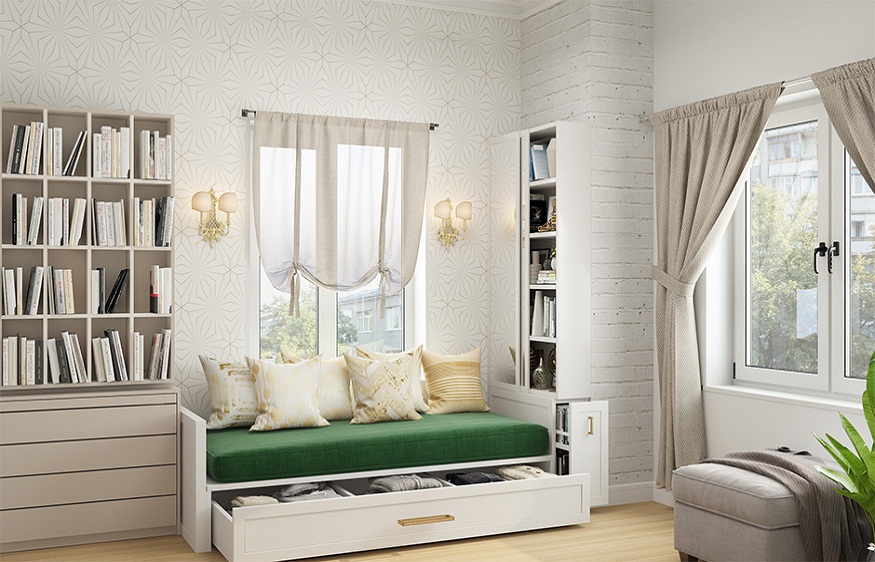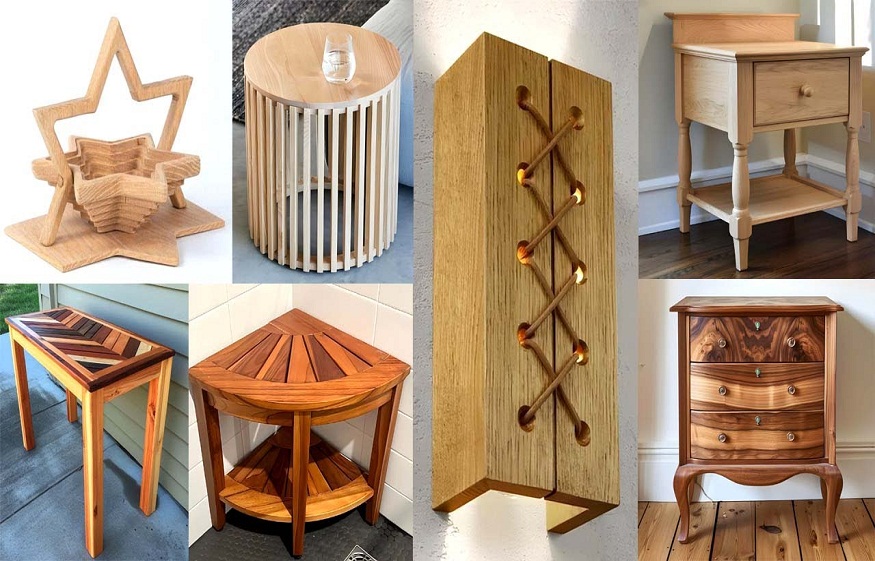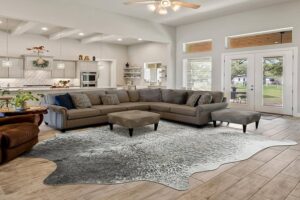How to Choose the Right Single Bed for Your Drawing Room Without Compromising Space
In many Indian homes, the drawing room isn’t just a formal space for entertaining; it’s a multipurpose zone. One moment it’s where guests are welcomed; the next, it’s a quiet corner for an afternoon nap or a crash pad for visiting relatives. With increasing demands on compact urban layouts, a single bed in the drawing room can be both a smart space-saver and a comfortable solution.
But fitting a bed into a space meant for hosting is tricky. It can’t overpower the room. It must serve more than one function. And ideally, it should blend in so well that it doesn’t even feel like a bed until you need it to be one.
Let’s unpack what makes a single bed work in a living space, and what doesn’t.
Let’s start with the most essential question: why do you even need a bed in your drawing room?
1. Start with the Purpose, Not the Piece
What’s the reason behind adding a single bed to your drawing room? Is it for overnight guests? Daytime lounging? A teenager’s casual spot to scroll and snooze?
Understanding the use case will help you decide between a flat wooden charpoy-style bed, a cushioned diwan, or a foldable frame with a mattress. Form must follow function.
Consider This: Make a list of secondary functions you want from the bed—like storage, side seating, or backrest support. This helps narrow your choices early.
Once the purpose is clear, the next step is to figure out how much space you actually have to work with.
2. Measure Twice, Decide Once
A standard single bed is roughly 36-39 inches wide and 72-75 inches long. But the usable space around it matters more than the bed itself.
- Will it block movement between furniture?
- Can it double up as a seating bench during the day?
- Does it interfere with natural light, doors, or power outlets?
Use masking tape or a bedsheet on the floor to visualise the size in your living room before buying.
Quick Consideration: Leave at least 18–24 inches around the bed to allow easy movement.
Knowing your measurements lets you choose a structure that fits your room and your routine.
3. Choose the Structure That Matches Your Layout
Not all single beds are built the same; your layout should decide what you bring in.
- A Low Diwan works well in traditional or semi-formal drawing rooms.
- A Sleek Trundle Bed adds sleeping space while hiding away the bulk.
- A Storage Cot is great if you need to tuck away blankets, pillows, or winter wear.
Quick Consideration: Avoid beds with large headboards or railings that make the room feel boxed in.
With the frame sorted, it’s time to consider comfort, starting with the mattress.
4. Don’t Underestimate the Mattress
The mattress makes a big difference in both visual height and comfort.
- A thinner mattress (4–5 inches) keeps the look minimal.
- Thicker mattresses are fine for regular sleep use, but look bulky during the day.
- Foam is light and easy to move. Coir lasts longer but is heavier.
Quick Consideration: Go for dual-purpose mattresses with a firm side and a soft side—you can flip them depending on the guest.
Comfort matters, but so does how the bed looks in the space.
5. Pick a Style That Blends, Not Stands Out
A mismatched bed frame can ruin the aesthetic of a carefully set-up room. Try to echo elements that already exist.
- Match the wood stain with your centre table or TV unit.
- Use cushions and bolsters in similar tones as your curtains or rug.
- If everything is neutral, the bed can be the accent piece, with printed fabric or a carved frame.
Quick Consideration: Choose beds with removable upholstery or slipcovers for easier cleaning and seasonal changes.
Now ask yourself: should your bed also work as a storage unit?
6. Storage or No Storage? Ask Yourself This
Under-bed drawers can be a bonus if your home is short on cupboards or lofts.
- Hydraulic storage is seamless but costlier.
- Pull-out drawers are more accessible but need clearance space.
- No-storage beds look lighter and are easier to shift when rearranging the room.
Quick Consideration: If you vacuum often or have pets, open-bottom beds are easier to clean under.
Regardless of the frame and function, how you style the bed affects whether it feels part of the decor.
7. Add Layers That Make It Day-to-Night Friendly
To avoid the bed looking like a leftover afterthought, style it like part of the decor.
- Use a diwan set with matching covers and bolsters.
- Add a lumbar pillow or a runner for daytime.
- Keep an ottoman or small stool next to it for visual balance.
Quick Consideration: Tuck a thin quilt or shawl under the cushion during the day. Pull it out when guests stay over.
But placement isn’t only about aesthetics—it’s also about comfort and practicality.
8. Don’t Forget Ventilation and Light
Where you place the bed also affects comfort and visual harmony.
- Avoid placing it directly under a fan or next to full-length curtains.
- Choose a spot with natural light but without glare, especially if you use it to read or relax.
Quick Consideration: For hot cities, avoid full leather or rexine finishes. They trap heat.
Sometimes flexibility wins—especially when guests aren’t regular and space is tight.
9. Folding Options Are Great—If Used Right
Folding or rollaway beds can work beautifully—but only if you actually fold them back.
- Metal frames are more durable but may look industrial.
- Wooden folding beds blend better in traditional homes.
- Make sure the folding mechanism doesn’t damage your floor or mat.
Quick Consideration: Keep a small corner or storage box nearby to stow pillows or sheets when the bed is folded.
And finally, no matter how temporary the idea seems, future-proofing is always smart.
10. Think Long-Term—Even in a Temporary Space
Just because it’s in the drawing room doesn’t mean it should be treated like an afterthought. Invest in something durable and neutral—you’ll always find a use for it elsewhere.
- Can it later move to a guest room or a child’s room?
- Will it still look good after 5–7 years?
Quick Consideration: If you’re planning to keep it long-term, pick something with a neutral silhouette and avoid trend-based pieces.
—
Final Thought
A single bed in the drawing room can be a clever, comfortable addition—if you pick it with the same care you’d give to a centre table or sofa. It’s not just an extra bed. It’s a spot to relax, read, recharge, and host. And when done right, it adds value without taking over the room.
Make sure the bed doesn’t become an eyesore or a storage dump. Choose something that complements your space when not in use and steps up when needed. Think about who will use it, how often, and how well it can blend into your existing layout.
Function, form, and flexibility must work together. A well-chosen single bed can quietly transform your drawing room into a more welcoming, multi-functional space.
Think purpose, think proportions, and then choose the piece that fits your home, not just your wishlist.








Post Comment
You must be logged in to post a comment.